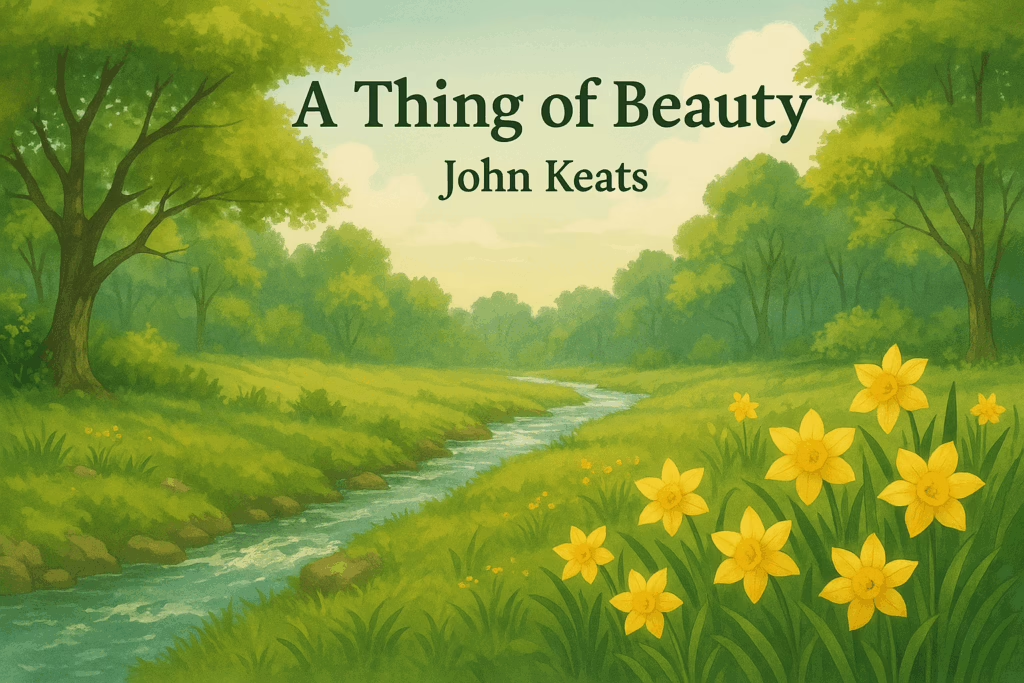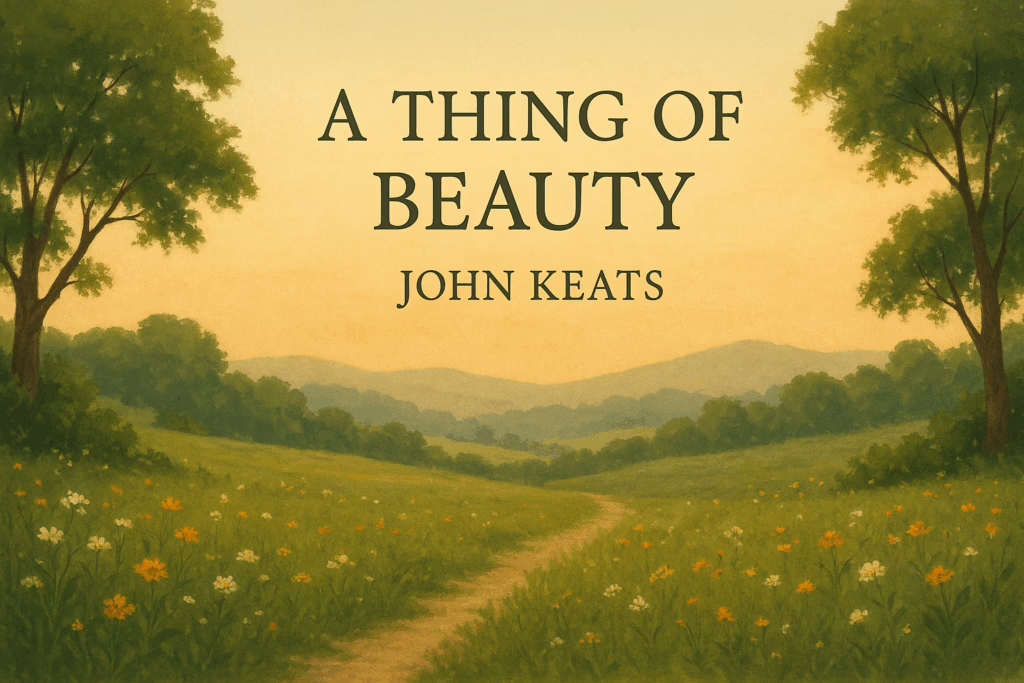Summary of “A Thing of Beauty”
In the poem A Thing of Beauty, John Keats celebrates the everlasting power of beauty. He asserts that a beautiful thing gives joy forever because its charm never fades; instead, it grows stronger with time. Beauty provides shelter, peace, and comfort—like a quiet bower offering sweet dreams, good health, and calm breathing.
Even though life is filled with sadness, hopelessness, and the lack of noble qualities, some form of beauty always lifts the “pall” from our darkened spirits. Keats lists many beautiful things in nature—the sun, moon, old and young trees, daffodils, clear streams, forest ferns, and musk-rose blooms. He also includes the grandeur associated with heroic stories of the “mighty dead,” and all the lovely tales we hear and read.
To Keats, beauty is like an “endless fountain of immortal drink” pouring down from heaven. This eternal source refreshes and nourishes human beings, giving them strength to live joyfully in spite of life’s troubles.
Introduction About the Poet – John Keats
John Keats (1795–1821) was one of the most cherished poets of the English Romantic movement. Although he was trained to be a surgeon, Keats chose to dedicate himself completely to poetry, following the call of his artistic spirit. His extraordinary ability to perceive beauty in the world around him, and his power to express emotions, moods, and aspirations in rich, musical language, have made his works timeless.
Keats’ poetry is known for its sensuous imagery, deep love for nature, and philosophical reflections on beauty and human experience. The excerpt A Thing of Beauty is taken from his long poem Endymion: A Poetic Romance, which is based on a Greek legend about the shepherd Endymion and his celestial love, Cynthia, the Moon Goddess. Keats’ talent lies in transforming such myths, landscapes, and emotions into lines that continue to “sway and delight” readers across generations.
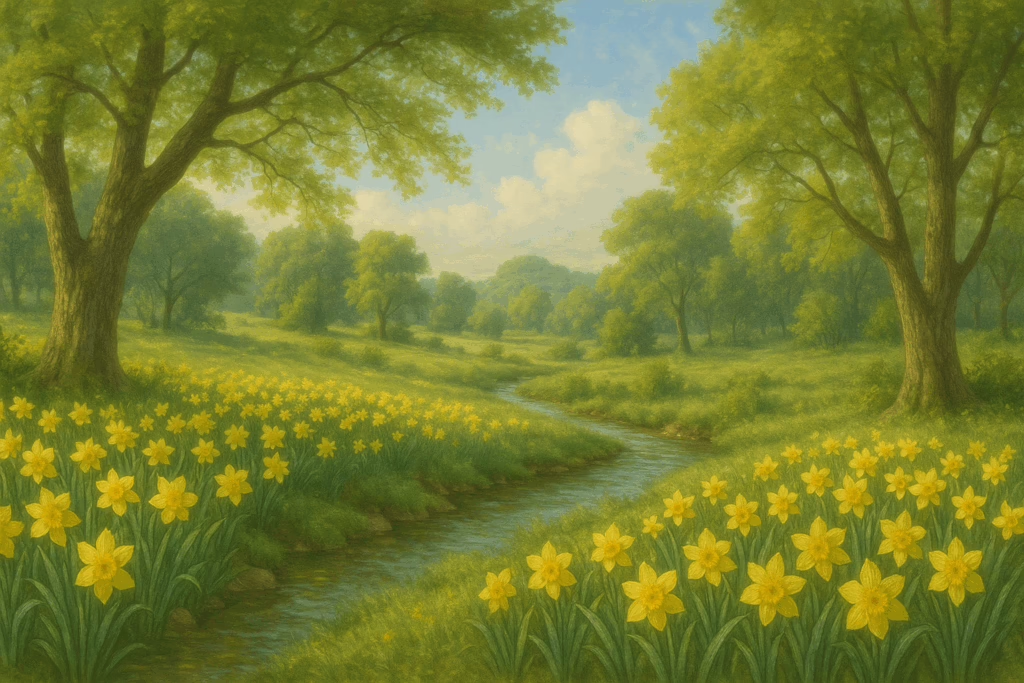
Textual Questions and Answers
1. List the things of beauty mentioned in the poem.
The poem mentions many things of beauty, including:
- the sun and the moon
- trees old and young sprouting shady blessings
- daffodils
- clear rills (small streams) that create cooling shelters
- the mid forest brake rich with musk-rose blooms
- the lovely tales we have heard or read
- the grandeur of the dooms imagined for mighty heroes
These are all described in the poem as sources of joy and inspiration.
2. List the things that cause suffering and pain.
Keats mentions several things that cause human suffering:
- despondence (sadness and hopelessness)
- the inhuman dearth of noble natures
- gloomy days
- unhealthy and over-darkened ways made by humans
These reflect the darker aspects of life and human behaviour.
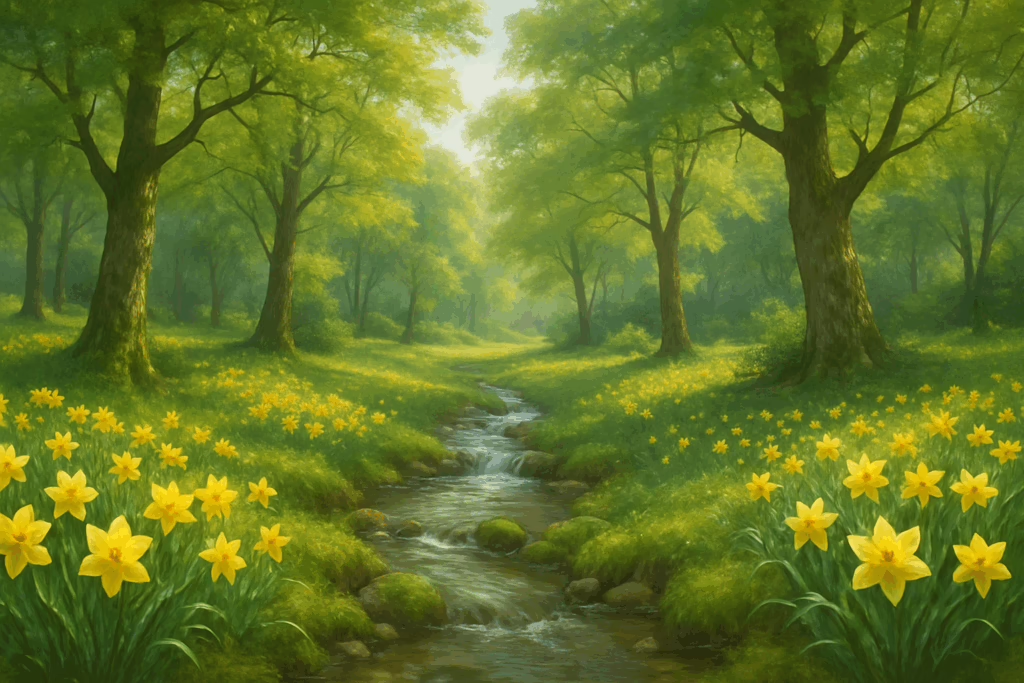
3. What does the line, “Therefore are we wreathing a flowery band to bind us to earth” suggest to you?
This line suggests that human beings create and cherish beautiful things as a way of staying connected to life.
The “flowery band” symbolizes how beauty keeps us grounded, hopeful, and emotionally tied to the world, despite the sadness and negativity around us.
4. What makes human beings love life in spite of troubles and sufferings?
Human beings love life because some shape of beauty always removes the pall (darkness) from our spirits.
Beauty—whether in nature, stories, or noble ideas—gives comfort, hope, and strength to endure difficulties.
5. Why is ‘grandeur’ associated with the ‘mighty dead’?
Keats associates “grandeur” with the mighty dead because we imagine noble, heroic destinies for them.
Their lives and deeds become glorious in memory, forming part of the beautiful tales that uplift our spirits.
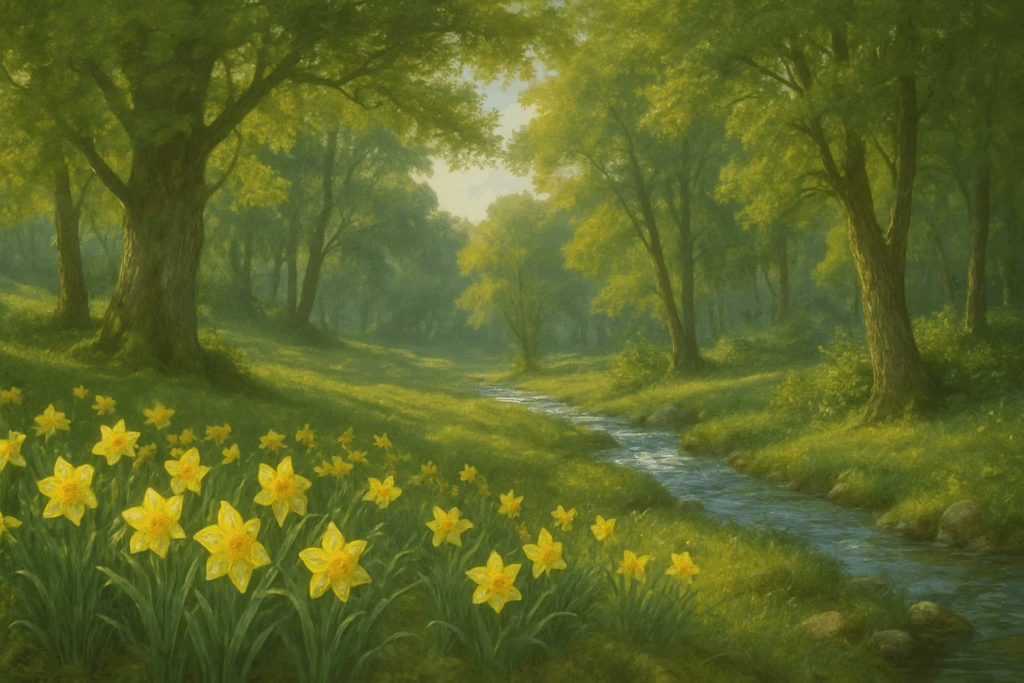
6. Do we experience things of beauty only for short moments or do they make a lasting impression on us?
According to the poem, things of beauty make a lasting impression.
Keats says beauty is “a joy forever”—its loveliness increases, and it “will never pass into nothingness.”
This means beauty has a permanent, enduring impact on the human mind and soul.
7. What image does the poet use to describe the beautiful bounty of the earth?
Keats uses the image of “an endless fountain of immortal drink, / Pouring unto us from the heaven’s brink.”
He suggests that beauty flows continuously like a divine fountain, refreshing and nourishing humanity forever.


